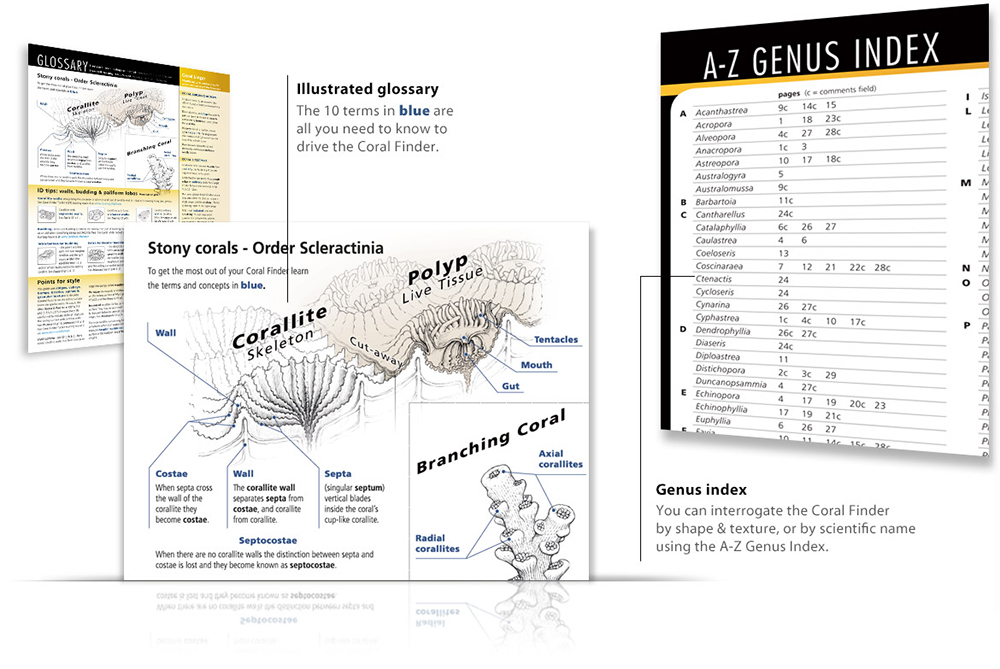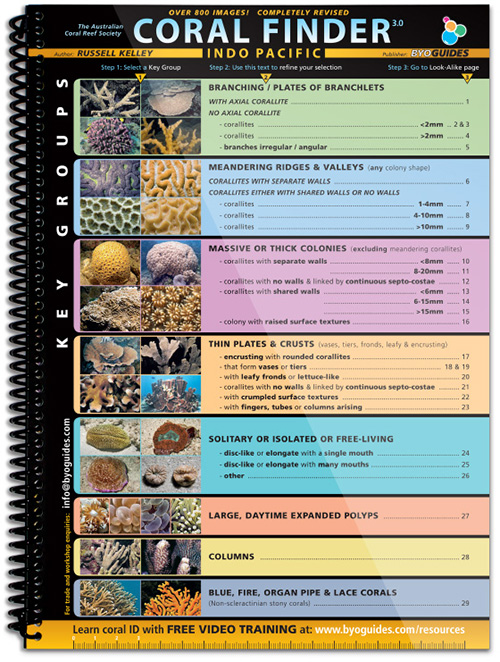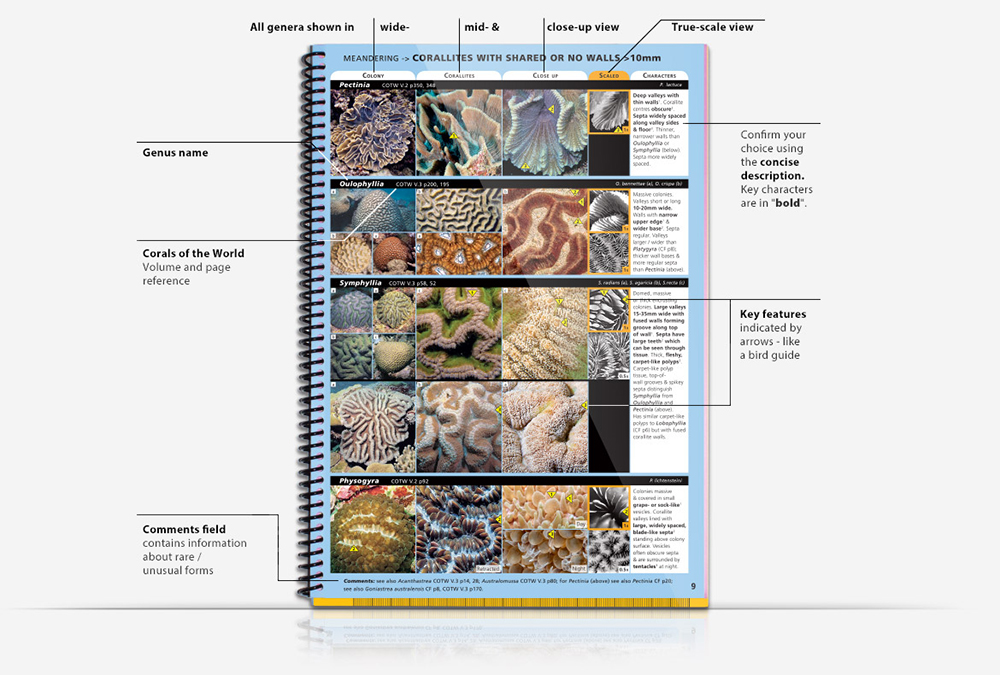 I think we all know that coral ID can be tricky and can take a level of commitment that might be beyond the casual observer. What we need are guides with clear descriptions and a methodology that allows us to discard incorrect IDs with confidence as we ‘narrow in’ on the correct one. I think I’ve just found a tool that does just that.
I think we all know that coral ID can be tricky and can take a level of commitment that might be beyond the casual observer. What we need are guides with clear descriptions and a methodology that allows us to discard incorrect IDs with confidence as we ‘narrow in’ on the correct one. I think I’ve just found a tool that does just that.

Corals are easy to identify in some cases, some are plates and others are finger-like…right? Well no, it’s not that simple!
Possibly the most useful section of Coral Finder 3.0 is the opening one, which discusses why coral ID needs to be based on features beyond overall morphology. Simple appearance and form can change depending on a coral’s location on the reef, with the same species showing wildly variable ‘ecomorphs’. Coral Finder 3.0 uses a logical, systematic approach, based on close observation, accurate measurement, and good photography of corallites.
The guide also briefly discusses how scientists are now using molecular techniques to identify corals down to a species level, as well as discussing how the same species can show significant differences from one part of its geographic range to another, causing what the guide calls “maddening variation”, further emphasizing the point that close inspection of corallites is needed.
So, how does it work?
The guide uses a type of biological ID tool known as a key, this is a common approach used by biologists to separate and help identify a range of groups based on their morphology, from snails to mosses and flies to sponges. Sometimes you can use them to reach species level, though some keys are only able to reach genus or even family level, requiring microscopic and/or molecular analysis to get closer to species level.
Coral Finder 3.0 uses an approachable, visual system and I must say the photography is excellent and very clear. The guide uses eight initial groups (on the front page), based on appearance and features, that are then discussed in more detail in the next stage. For example, if we have a coral with ‘meandering ridges or valleys’ we can select which step to continue to, depending upon whether the corallites have ‘separate walls’, ‘shared walls’, or ‘no walls’. By measuring the corallites we further ‘narrow in’ our search.
To continue our example: we have selected a coral which is ‘massive’, with ‘corallites with separate walls’ which are ‘8-20 mm across’. This selection takes us to a page with three options: Favia, Montastrea, and Diploastrea.
Under each genus we find a series of images showing the whole colony, individual corallites, and a life-size image of a corallite. This is sometimes shown in a high contrast monochrome image, which is very useful with smaller specimens.
You might consider your work done at this point; for many, a genus level ID is sufficient. However, the guide provides a series of notes, comments, and some species names. It also provides links to online glossaries and training movies created by the publisher, that are well worth exploring, as well as page references for Veron’s Corals of the World, a three-volume work which is currently available online.
Coral Finder 3.0 is printed on robust card which is splash proof – very useful for life on a dive boat or in an aquarium. I can honestly say, this is the most human-friendly guide I’ve ever come across and with the extensive online tools it is a joy to use. The guide is Indo-Pacific only.
Find more information here:
http://www.byoguides.com/coralfinder/











0 Comments